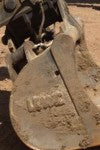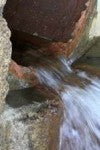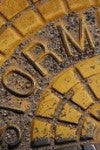Construction Stormwater
As stormwater leaves a construction site, its flow can pick up and transport potential water pollutants into a Municipal Separate Storm Sewer System (MS4) or deposit directly into river, lake, or coastal water. As a mandate of the Clean Water Act, all site owners or operators whose construction projects will involve land disturbing activities on one (1) acre of land or greater and will be discharging wastewater and/or stormwater into surface waters of the U.S. are required to apply for coverage under a construction general permit.

Industrial Stormwater
Industrial stormwater pertains to industrial structures – such as manufacturing, transportation, mining, and electric power facilities – that discharge stormwater into rivers, lakes and streams from pipes, outfalls or other point sources on a the facility premises. As per the Clean Water Act and the National Pollutant Discharge Elimination System (NPDES) Permitting Program, industrial or multi-sector general permit coverage is required for any industrial facilities that discharge stormwater from their industrial areas to surface waters of the U.S, or to a Municipal Separate Storm Sewer System (MS4) that discharge to the Nation's surface waters. Other examples of industrial facilities that require a permit include scrap yards, landfills, sewage treatment plants, and hazardous waste management establishments.

Municipal Stormwater
Stormwater traveling over land will eventually drain into a conveyance system. That system is generally a Municipal Separate Storm Sewer System (MS4). An MS4 is a conveyance channel such as catch basins, curbs, gutters, pipes, tunnels, or storm drains that discharge into waters of the U.S. Any urban area that collects stormwater runoff in MS4s and discharge it to surface waters are mandated to apply for a municipal stormwater permit under the Federal Clean Water Act.

Agricultural Stormwater
Agricultural activities associated with the clearing, grading, excavation and construction of livestock feeding facilities require NPDES permit coverage. However, any stormwater discharges from the clearing, grading and excavation for the purpose of growing crops are not covered by the NPDES program as these discharges are considered to be agricultural stormwater discharges and therefore are not included in the requirements of the NPDES permitting program. The applicability of the NPDES program to the post-construction, operational phase of these facilities must also be determined according to the Federal Clean Water Act regulations for animal feeding operations and feedlots.


